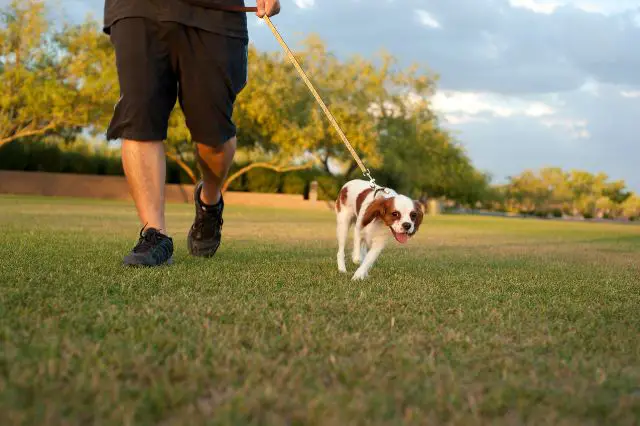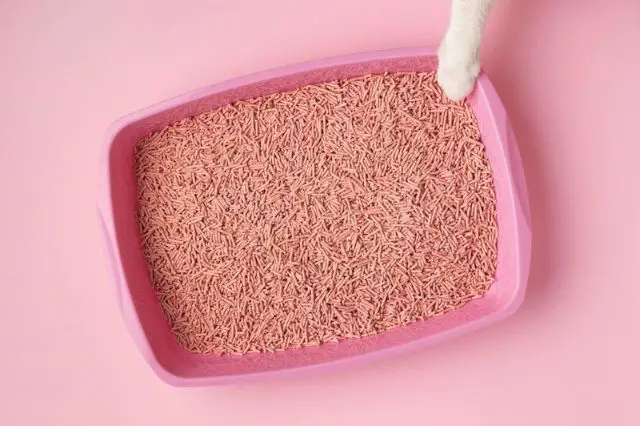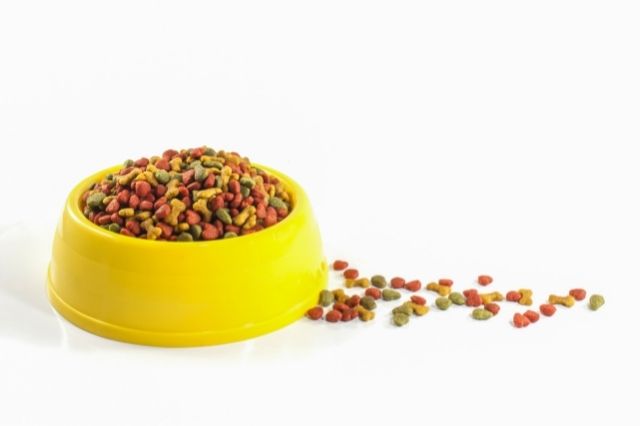Pets
Leash Training 101: A Guide for Training Your Puppy to Walk with a Leash


Leash training is an essential part of raising a happy and healthy puppy. Walking with a leash keeps your puppy safe and allows it to exercise, explore, and meet new people. Although leash training can be a challenge, there are steps you can take to make it easier.
Get the right size leash and collar
Getting the right size leash and collar is necessary when looking for golden retriever puppies for sale or other breeds. A short leash can cause discomfort for your puppy, while a long leash can make it difficult to control your puppy. Ideally, a leash that is six feet long is best for most dogs.
There are different collars, including flat collars, martingale collars, and harnesses. Flat collars are the most common type of collar and are suitable for most puppies. Martingale collars are ideal for dogs that tend to slip out of their collars, and harnesses are for puppies that tend to pull or have respiratory issues.
Introduce the leash and collar
Once you have the right-sized leash and collar, it’s time to introduce your puppy to them. Start by letting your puppy sniff and explore the collar and leash. You can put the collar on and off a few times, so your puppy gets used to the sensation.
When your puppy is comfortable with the collar, attach the leash to it and let your puppy drag it around the house. Allowing your puppy to pull the leash around will help them get used to the weight of the leash and the feeling of being connected to you.
Start with short training sessions
Leash training takes time and patience, so start with short training sessions of 5–10 minutes. Choose a quiet area without too many distractions, such as your backyard or a quiet park.
Hold the leash loosely and let your puppy explore their surroundings. If your puppy pulls or tries to go in a different direction, gently redirect them back to you with a treat or a toy. Do this process several times a day, gradually making the training sessions longer each time.
Use positive reinforcement
Positive reinforcement is a powerful training tool to help your puppy learn to walk on a leash. Whenever your puppy walks nicely on a leash, reward them with praise and a treat. Avoid punishing your puppy for pulling or misbehaving. Instead, focus on rewarding good behavior and redirecting your puppy’s attention when they start to pull or wander off.
Be consistent
Use the same commands and techniques every time you go for a walk. Consistency will help your puppy learn what you expect of them and what behaviors are unacceptable.
If your puppy starts to pull or misbehave, stop and wait for them to calm down before continuing the walk. Be patient and persistent, and your puppy will eventually learn to walk on a leash.
Learning to walk on a leash will benefit your dog’s health, but walking a dog significantly benefits the owners’ health too. Once you learn to walk your dog correctly, you can add this to your exercise routine of going to the gym or exercising at home.
Before you go
Leash training is an essential part of raising a well-behaved and happy pup. With the right equipment, positive reinforcement, and consistency, you can make the training process a fun and rewarding experience for both you and your furry friend.
Remember that every puppy is different and will learn at their own pace, so don’t get discouraged if yours doesn’t get it right away.
Pets
How to Treat Anxiety in Dogs


Does your dog have anxiety? Just like humans, dogs can experience anxiety. In fact, most dogs will experience anxiety at some point in their life. This anxiety can become more serious and long-term if action is not taken to control it, which could lead to debilitating behavioural issues and all kinds of health problems.
As a result, it’s important to know the signs of anxiety in dogs and how to treat it.
This post takes a look at some of the common causes of anxiety in dogs, as well as a few of the signs of anxiety to look out, before delving into some of the ways in which you can help treat your dog’s anxiety.
What causes anxiety in dogs?
Many things can trigger anxiety in a dog. Some of the most common causes include:
Separation from loved ones
Dogs are very prone to separation anxiety – especially when they’re still young. Most dogs will first experience separation anxiety as a puppy after being separated from their mother and litter. This does not last too long providing a puppy is properly adjusted to their new home (this post delves more into adjusting a puppy to their new home).
Many dogs also experience separation anxiety when separated from their owner. Dogs that are left alone are particularly likely to experience anxiety. Having some familiar company can reduce these feelings of anxiety, but most dogs will still be unsettled.
Changes in routine/lack of routine
Just like many humans, dogs love routine. It helps them know what to expect and to relax. Without routine, dogs may feel that they have to constantly be on guard and may act more erratically.
Big changes in routine can also throw dogs off and make them feel anxious. This includes things like moving home or changing their food.
New members of the household
Dogs may become anxious when new pets or people are introduced to a household. They may see them as competition or even a threat. While dogs are very territorial and will behave aggressively to people they don’t know, others may behave more timidly. It varies depending on the dog and the new arrival.
Abuse/trauma
Some rescue dogs may have been abused by previous owners, which could result in them being naturally more anxious. Certain traumatic events can also cause phobias in dogs just like humans. For example, a dog may become afraid of young kids if one child previously injured them, or they may become afraid of getting in a car if they experienced an unpleasant car journey.
Lack of stimulation
Some dog breeds need to be kept regularly stimulated. Boredom may lead to restlessness and anxiety of not knowing what to do. An example could include locking a dog in a room all day with no toys.
Sensory overload
While not enough stimulation can make dogs anxious, so can too much stimulation. Dogs have heightened senses of hearing and smell, and so can become particularly anxious when exposed to frequent loud noises or lingering unpleasant smells. Many dogs get very anxious around times of the year when there are fireworks. Similarly, strong smells of citrus of vinegar may cause dogs to avoid certain rooms.
Are some dog breeds more anxious than others?
All dog breeds are prone to anxiety. However, some dogs are known to get more anxious to certain triggers.
Research has found that the breeds most prone to anxiety are Lagotto Romagnolos, Wheaten Terriers, Spanish Water Dogs, Shetland Sheepdogs and Miniature Schnauzers. Mixed-breed dogs have also been found to be more anxious than pure-bred dogs, although it’s worth noting that mixed breed dogs are less at risk of developing most other health problems.
Signs of anxiety in dogs
Some dogs are quite good at hiding their anxiety. However, most will exhibit some symptoms that show that they are in distress. Some of the telltale signs that a dog is anxious include:
- Whining/barking: Many dogs bark when exposed to threats to whine when lonely or bored.
- Eyes, ears and tail: When anxious, it is common for dogs’ eyes to widen, their ears to go back and their tail to go between their legs.
- Pacing and restlessness: A lot of dogs pace up and down when stressed. Some try to sleep or sit down but keep changing position or getting up.
- Excessive yawning/drooling/licking: Some dogs keep yawning as a way of relieving stress (most commonly from boredom, although it can be due to other stress triggers). Others start drooling a lot, or start licking their lips or themselves to stay stimulated.
- Trying to hide or escape: Many dogs will try to run away from stress triggers. For example, some dogs will run away from a vacuum cleaner and hide in another room.
- Changes in appetite: If a dog is in a state of constant stress, they may refuse to eat. Others may become extra ravenous and try to eat foods they wouldn’t usually try to go for.
- Changes in bowel movements: Anxiety can also cause some dogs to develop diarrhoea. During periods of extreme stress, some dogs may also feel unable to hold their bowels and may poo inside – even if long trained not to.
- Panting/shaking: A lot of dogs pant a lot when stressed. When under a lot of stress, dogs may start to tremble too.
- Foul smells: A lot of dogs express their anal glands when stressed. This can lead to a foul fishy odour.
- Excessive shedding: Very stressful situations or prolonged stress can also cause some dogs to lose their hair. It is natural for many dogs to shed their coat regularly. However, you should look out for lots of shedding in a short period of time or lack of hair regrowth.
How to relieve anxiety in your dog
There are several measures you can take to help alleviate feelings of anxiety in your dog. A few examples are included below.
Play with/exercise them daily
Regular physical activity and bonding time can help alleviate boredom. It can also tire out your dog, so that they’re able to deal with separation anxiety more easily (many dogs will take a nap after a long walk). Some breeds need more exercise and play time than others. Make sure you understand your dog’s needs.
Enjoy strokes and cuddles
Many dogs can also be calmed simply by providing physical contact. Petting your dog or even allowing them to lie by you while touching you could help them feel calmer in stressful situations such as a fireworks display.
Allow them some private space
While dogs love attention, they can still get overwhelmed by too much physical contact. This is common in families with young kids or when guests are coming around. In these cases, dogs may need a private space to retreat to in order to relax. A crate is the best option for this – just make sure to tell everyone not to bother your dog if they retreat to their crate.
Play music/put the radio on
Dogs can get more anxious when left alone in a quiet environment. Studies have shown that playing a radio or some background music can help put dogs at ease by giving them a sense of being around people. Music can also be used to drown out loud sounds like fireworks or traffic, which may frighten your dog at certain times.
Use calming familiar scents
You can also calm your dog by introducing familiar soothing scents. For example, separation anxiety in puppies can be reduced by leaving them with a blanket that smells of their mother. Similarly, leaving a dog with an item of clothing that smells of you could calm them if they are staying around someone else’s house.
Try anxiety medication for dogs
There are many supplements containing natural anxiety-relieving ingredients that you can buy for dogs. Ingredients to look out for include l-theanine, lemon balm, valerian and chamomile. These supplements can be added to their food. You can also buy supplements including ingredients like melatonin to improve your dog’s sleep quality. Stronger anxiety medication can be prescribed by a vet.
Should you get professional help?
Professional intervention is sometimes necessary with very anxious dogs. There are a few professionals that you can talk to.
An animal communicator is one professional you can look into. These professionals can help translate feelings that your dog may be having – which could include identifying sources of stress. This could include spending some time with your dog to truly understand their behaviours.
Animal behavioural therapists can meanwhile help diagnose sources of anxiety and help your dog to overcome them. This could include alternative training methods to help reduce stress triggers. Thi can be very useful for dogs that have experienced trauma or abuse.
Finally, you can consult a vet. On top of prescribing medication, vets can check that anxiety isn’t caused by a physical health issue. For example, joint pain may make a dog afraid of stairs, while toothache could make a dog anxious of food.
Conclusion
Anxiety in dogs has many causes and there are many possible ways to treat it. By taking your time to identify triggers and explore treatment options, you can look after your dog’s mental health.
Pets
Strategic Cat Litter Box Placement: Creating the Perfect Spot for Your Beloved Feline


Finding the right location for your cat litter box is essential for its comfort, privacy, and overall usage. Strategic litter placement can help encourage healthy habits, minimise accidents, and ensure a positive experience for you and your feline companion. This article explores the considerations and tips for finding the perfect spot for your cat’s litter, such as placements in low-trafficked areas of the house, in private locations or even special places designed for this. This way, you’ll have a healthy and happy cat all day long.
Privacy and Accessibility
Cats appreciate privacy when using their litters. Look for a location that offers a sense of seclusion, away from high-traffic areas and noisy appliances. Consider placing the box in a quiet corner, a dedicated room, or even a discreet enclosure explicitly designed for the purpose. A secondary bathroom is a room that could meet these criteria. A balcony is also a good idea if it is a windows-closed one.
While privacy is essential, accessibility is equally crucial. Ensure that the litter is easily accessible to your cat at all times. Avoid placing it in areas that require them to navigate obstacles or travel long distances, as this may discourage them from using the litter consistently. Aim for a location that is convenient and easily reachable for your cat.
Multiple Litter Boxes in Multilevel Homes
A litter box on each level is advisable for households with multiple floors. Cats may be less inclined to use a litter box if they travel up or down stairs to access it. Multiple boxes ensure that your cat always has a nearby option, reducing the likelihood of accidents or litter box avoidance. Place the litter on different levels in a quiet and accessible area on each floor. This ensures that your cat can easily find litter anywhere in the house, promoting consistent usage and reducing the chances of accidents.
Monitoring and Adjusting the Cat Litter Box
Cat litter box placement is not a one-size-fits-all solution. Observing your cat’s behaviour and adjusting as needed is essential. If you notice any signs of litter box avoidance, accidents, or discomfort, it may indicate that the litter box placement needs to be reassessed.
Pay attention to your cat’s litter usage patterns and preferences. They may have individual preferences for privacy, location, or even the type of litter used. By monitoring their behaviour, you can make necessary changes to ensure the placement is ideal for your cat’s needs.


Separating Food and Litter Areas
Just like humans, cats have a natural instinct to keep their eating area separate from their elimination area. Avoid placing the litter box near your cat’s food and water bowl area. Cats may feel reluctant to use a box close to their feeding area, as they prefer to distinguish between them. Instead, place it in a separate area, preferably in a different room or near your cat’s food. This separation helps maintain cleanliness and hygiene while ensuring your cat feels comfortable using the litter.
Reasons to Avoid High-Traffic Areas
Cats prefer a peaceful and undisturbed environment when using the cat litter box. Avoid placing it in high-traffic areas such as hallways, near frequently used doorways, or close to loud appliances. Cats may feel vulnerable and stressed when using it in such areas, leading to potential litter box aversion or accidents. Think about it: no one wants to be disturbed while doing these kinds of business.
Opt for quieter and less frequented spaces, such as spare rooms, bathrooms, or corners of less commonly used rooms. This gives your cat a sense of security and privacy while using the litter. Placing it in areas with low traffic is essential for several reasons:
Privacy
As they are naturally private animals, cats prefer to have a sense of seclusion when using litter. Placing it in a low-traffic area gives them the privacy they need to feel comfortable and secure. It allows them to focus on their elimination without feeling watched or disturbed, promoting a positive litter box experience.
Reduced Stress
Cats are sensitive to their environment, and high-traffic areas can be stressful. When the box is placed in a quiet and peaceful location, away from constant human or pet movement, it creates a calm environment that reduces stress and anxiety. A low-traffic area allows cats to relax and concentrate on their litter activities without distractions or even stressful events.
Decreased Interruptions
Placing the cat litter box in a low-traffic area helps minimise interruptions during your cat’s elimination process. Cats prefer uninterrupted moments to maintain their focus and complete their business. Placing it in a quieter space reduces the chances of sudden movements, loud noises, or disruptions that could startle or distract your cat while using the litter box.


Improved Litter Box Habits
Cats are creatures of habit, and consistent litter usage is essential for their health and well-being. Placing it in a low-traffic area encourages them to associate that spot with their elimination needs. It establishes a routine and reinforces good litter habits, as they can confidently access it without interference or disturbances.
Prevention of Accidents
Placing the cat litter box in high-traffic areas increases the likelihood of accidents or litter aversion. Cats may avoid using it if they feel exposed or vulnerable while doing business. They might seek alternative locations in the house, resulting in inappropriate elimination. Placing it in a low-traffic area reduces the chances of accidents and encourages cats to use their designated litter box consistently.
Conclusion
Strategic litter box placement significantly affects your cat’s habits and overall well-being. By considering privacy, accessibility, and separation from food areas, you can create the perfect spot for your cat’s litter box. Also, consider your cat’s personality and preferences to find the best place for it. Remember to monitor their behaviour and adjust as needed to ensure the box location meets their needs. With a well-placed box, you’ll help promote consistent usage and maintain a happy and healthy environment for your feline companion.
Pets
5 Foods That Are Best for Fussy Dogs


All of us who have a furry friend know for a fact how their behaviour gets affected by mood or the time of the day, just like us. This is why it’s important to feed them food that is healthy and ideal for them.
A hungry pet who won’t eat is every pet owner’s worst nightmare come true. On one hand you’re worried for them, on the other you’re frustrated at their stubbornness.
I know you care a lot about your pet and wouldn’t feed it something knowing that it would cause harm but the fact of the matter is that most dogs with picky eating habits are used to “luxurious” food items such as table scraps that they receive at the end of our meal.
Here are a few strategies that involve trying different types of food and understanding the difference so that the next time you pick up something to feed your friend, you’d be reassured knowing that they’d love it.
Human grade dog food for the spoilt friend
Given that most of us feed table scraps to our pets, it’s not strange for them to develop a taste for it. Once your pet develops a liking for food that we eat, it will be very tough for them to look at that bowl of dog food with the same excitement.
An alternative to feeding them something that they’d consider bland or not worthy of their palate could be the perfect substitute.
The next time you’re in the supermarket look for dog food that’s using human-grade food materials or simply put, food ingredients that are fit for human consumption. Such delicacies are bound to reduce their dislike for dog food.
Cucumbers, carrots and everything veggie
Our paw buddies aren’t able to tell you verbally whether they’d prefer a veggies based diet or a meat-based diet or a blend of both. We just try to figure that out as we try giving them a little bit of everything in the hopes that they’d eventually love something.
My friend had been facing the same issue which is when they tried offering cucumbers and other salad grade food which their pet devoured and since then, in addition to the regular dog food, some form of salad is always given to ensure that they get that extra hit of fresh veggies while getting the nutrition that’s needed.
The basic point, experiment with fresh food and see how they respond to it.
Natural ingredient based diet
With ingredients being the main focus of our discussion, I’d be remiss to not add another factor. How much of your dog’s food is based on natural ingredients and how much of it isn’t.
If you read the ingredients section of any packaging you’d find yourself as surprised as I was the first time I read the backside of one of those packages. Barring the basic raw material, there is no relevant information like where was it sourced from, how long was the raw material processed for or what form of processing was undertaken to obtain the final product.
It’s easier to do that in a supermarket, how do you manage to do it with online pet stores? The best place to start would be by reading product reviews or the list of ingredients and where you find them.
You could begin your journey from here to understand what to look for when you’re buying pet food online.
Avoid corn
A corn-based diet is healthy for humans but when it comes to dogs, feeding them corn won’t be doing their digestive system any favours.
If you’ve noticed your dog’s eating behaviour change after being introduced to new dog food, you’d want to check the list of ingredients to be sure.
It’s also possible that the dog food that you’ve been serving them all along has made changes to its ingredients, so be sure to look out for that as well.
Go easy on the treats
Another proven fact is that dogs who get habitual to eating treats often develop a flawed eating habit which prevents them from looking at their designated meals with as much gusto as they’d eye a treat.
Try regulating the treats and you’d notice a world of a difference when it comes to eating that same “bland” food regularly.
Dogs are dear friends and need to be treated with love, but too much of anything is never a good idea which is why, if you truly do care about your pet you’d be a little stern with them every once in a while.
If you’d like to understand more about what causes a change in the eating habits of your pet, read this article wherein Lousie Murray, a doctor of veterinary medicine explains the various factors affecting a pet’s behaviour.
Conclusion
The basic takeaway from this article should be that love can not always be gentle, it needs to be stern as well, to help your paw friend develop good eating habits. The other main thing to look out for is which ingredient suits your pet and what doesn’t. I hope you find what you’re looking for as does your pet.
-



 Quotes4 years ago
Quotes4 years ago125 Inspirational Car Quotes and Captions to Celebrate Your New Car
-



 Growth4 years ago
Growth4 years ago188 Deep Hurt Quotes with Images
-



 Quotes3 years ago
Quotes3 years ago148 Romantic Love Quotes for Her from the Heart
-



 Quotes3 years ago
Quotes3 years ago185 Cute Boyfriend Quotes for the Guy You Love
-



 Quotes3 years ago
Quotes3 years ago141 Best Heart Touching Quotes about Love, Life, and Friendship
-



 Quotes3 years ago
Quotes3 years ago134 Time Flies Quotes for the Unforgettable Moments
-



 Quotes3 years ago
Quotes3 years ago122 Inspirational Kite Quotes That’ll Make You Wanna Fly Right Now
-



 Quotes4 years ago
Quotes4 years ago101 Powerful Black Women Quotes to Empower You







